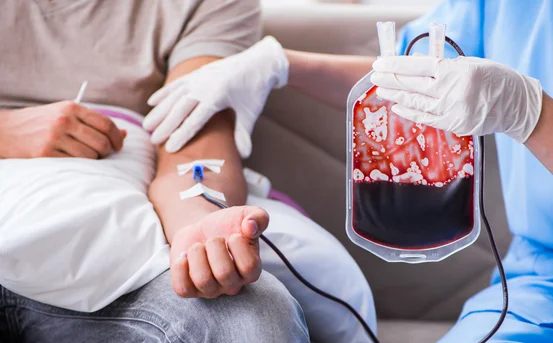Introduction
Pediatric critical care is a specialized branch of medicine focused on the diagnosis and management of life-threatening conditions in infants, children, and adolescents. When children face severe health crises such as trauma, sepsis, respiratory distress, or congenital anomalies, pediatric critical care steps in to stabilize and treat them in Pediatric Intensive Care Units (PICUs). The care provided is multidisciplinary and involves advanced technologies, pediatric intensivists, nurses, and allied health professionals working together to ensure the best outcomes. Depending on the child’s condition, there are various types of pediatric critical care interventions tailored to their specific needs.
Types of Pediatric Critical Care
- Neonatal Intensive Care :- One of the most critical branches of pediatric critical care is neonatal intensive care, which caters specifically to newborns with serious medical conditions. Babies born prematurely or with complications such as respiratory distress syndrome, congenital anomalies, infections, or birth injuries require intensive monitoring and treatment. Neonatal Intensive Care Units (NICUs) are equipped with incubators, ventilators, feeding tubes, and a highly trained team to support these delicate lives. The primary focus is on stabilizing vital signs, ensuring proper oxygenation, and promoting healthy development in the early days or weeks of life.
- Cardiac Intensive Care :- Pediatric cardiac critical care is dedicated to managing children with congenital or acquired heart diseases that necessitate intensive intervention. This includes conditions like congenital heart defects, cardiomyopathies, arrhythmias, and post-operative care after cardiac surgeries. These patients are monitored in Cardiac Intensive Care Units (CICUs), where continuous cardiac monitoring, inotropic support, and specialized nursing care are provided. This type of critical care requires close coordination between pediatric cardiologists, cardiac surgeons, and intensivists to optimize outcomes during the most vulnerable phases of treatment.
- Respiratory Critical Care :- Children suffering from severe respiratory conditions such as asthma exacerbations, pneumonia, bronchiolitis, or acute respiratory distress syndrome (ARDS) are treated in respiratory critical care settings. The primary aim is to maintain adequate oxygenation and ventilation, often through the use of high-flow oxygen therapy, mechanical ventilation, or non-invasive ventilation methods like CPAP or BiPAP. Close observation of blood gases, lung function, and infection markers is essential in managing these cases, with respiratory therapists playing a vital role in collaboration with critical care physicians.
- Neurological Critical Care :- This type of pediatric critical care manages children with life-threatening neurological conditions such as traumatic brain injury, seizures, central nervous system infections, or post-neurosurgical complications. These patients are monitored closely for signs of increased intracranial pressure, altered mental status, or respiratory compromise due to neurological dysfunction. Advanced monitoring tools such as EEGs, intracranial pressure monitors, and continuous sedation management are often required. The goal is to stabilize brain function and prevent secondary brain injury while planning long-term rehabilitation where necessary.
- Trauma and Surgical Critical Care :- Children who suffer from traumatic injuries like road accidents, falls, burns, or penetrating injuries need immediate and highly specialized care. Trauma pediatric critical care involves rapid assessment, stabilization of airway, breathing, and circulation, followed by surgical interventions if required. Post-operative care for complex pediatric surgeries also falls under surgical critical care. These units provide intensive pain management, wound care, infection control, and monitoring of vital signs, ensuring that the child recovers safely and effectively from major surgeries or injuries.
- Oncological and Hematological Critical Care :- Children undergoing treatment for cancer or blood disorders may develop life-threatening complications such as sepsis, tumor lysis syndrome, or severe anemia. Pediatric oncological and hematological critical care provides support during these episodes with blood transfusions, antibiotics, chemotherapy-related management, and organ support. These patients are at high risk of infections due to immunosuppression, making vigilant infection control and supportive therapies essential to their survival and recovery.
- Renal and Metabolic Critical Care :- This sub-specialty handles critical cases of acute kidney injury, chronic kidney disease, or metabolic crises such as diabetic ketoacidosis and inborn errors of metabolism. In such cases, children often require dialysis, strict fluid and electrolyte management, or specialized nutritional therapy. The care team must balance renal support with other organ functions, ensuring that metabolic imbalances do not result in multi-organ failure. Pediatric nephrologists work closely with the critical care team to tailor treatments to the specific metabolic needs of each child.
- Infectious Disease Critical Care :- Sepsis remains a leading cause of mortality in critically ill children and requires immediate, aggressive management in PICUs. Children with severe infections may experience systemic inflammation, shock, and multiple organ dysfunction. Early administration of broad-spectrum antibiotics, fluid resuscitation, vasopressors, and organ support is crucial in such cases. This type of critical care also addresses infections like meningitis, encephalitis, or severe viral illnesses such as influenza and dengue.
- Post-Transplant Critical Care :- Children who have undergone organ transplants, such as liver, kidney, or bone marrow transplants, need close post-operative monitoring. Post-transplant pediatric critical care focuses on managing rejection episodes, preventing infections, and maintaining immunosuppressive therapy. These patients require a delicate balance between organ support and immune control, often remaining in the PICU until stable.
- Psychiatric and Behavioral Crisis Care :- Though less traditional, psychiatric critical care is becoming increasingly essential for children experiencing acute mental health crises. These may include suicidal behavior, severe anxiety, or psychiatric conditions requiring sedation or containment. Safe and therapeutic care environments are created for such children, involving mental health professionals, social workers, and pediatric intensivists to stabilize the child both emotionally and medically.
Conclusion
Pediatric critical care encompasses a wide range of specialized interventions tailored to children suffering from acute and life-threatening health conditions. Each type of care addresses specific organs or systems, and together they create a holistic support network for pediatric patients in the most vulnerable stages of their health journey. From neonatal support for premature infants to managing critical trauma, heart defects, or infectious diseases, these types of pediatric critical care ensure that every child receives the most advanced, precise, and compassionate treatment possible. As medical science continues to evolve, pediatric critical care will remain a cornerstone in protecting and nurturing young lives during their most fragile moments.























